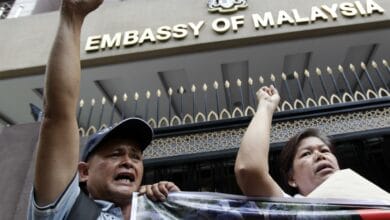Water “guardians” resume ancestral practices in Bolivia

By Yolanda Salazar
Santiago de Machaca, Bolivia, May 22 (EFE).- The indigenous people of San Andres and Santiago de Machaca, two towns in the Bolivian altiplano, have become the “guardians of water” by rescuing ancestral wisdom to save a small river basin on which about 100 communities depend by implementing ancient technologies to prevent erosion and save water, asking for other parts of the country to replicate their efforts.
The ancestral practices employed by their “grandfathers” are thought to have preserved the Jach’a Mauri micro-river basin, which forms part of a hydric system that supports dozens of villages and communities, Egberto Condori, an indigenous leader in Jose Manuel Pando province, told EFE.
These villages, some 150 kilometers (93 miles) from La Paz, are part of several pilot projects being undertaken in Bolivia and Peru, implemented by the governments of the two nations with the technical support of the Titicaca-Desaguadero-Poopo and Salar do Coipasa Hydric Resources Administration (GIRH TDPS).
“In the past, there were no engineers or architects, but they had an innate wisdom and I believe that we have to recover it once again,” Condori said.
To accomplish that, some 23 communities have joined together to share their knowledge about water conservation techniques such as building stone dikes and “camellones,” which are earthen ridges built up on the streambanks to protect against overflow; infiltration ditches, which help retain water, and “q’otañas,” which are basins that function like water reservoirs to supply livestock.
In addition, some of the nearby hills have been reforested with native species like queñua, kiswara and sehuenca to help prevent erosion and retain soil.
“The sediment comes from the mountains … It comes with mud and the water becomes cloudy, when it stagnates the mud settles and that is what remains on the ground and wrecks the pastures, so the cattle don’t have anything to eat,” Cecilio Tarquino, the indigenous leader of the Huancarami community, told EFE.
These ancestral techniques began to be implemented a year ago in these communities where about 42 families participated to determine the benefits and, over time, to identify the practices that work and those which do not.
After a year of testing, the most “successful” practices in the different communities are “reforestation … stone dikes, (and) terraces,” which are formed slowly and are a type of wall build on slopes that help retain water, Hernan Figueredo, an agronomist with Practical Action, told EFE.
Before getting the project under way, the sedimentation and erosion that had been noted throughout the micro-river basin amounted to approximately 4.5 million cubic meters (159 million cubic feet), an “extremely high” figure, but the project was able to retain 52,000 cubic meters (1.83 million cubic feet) of soil, he said.
“We’ve managed to retain 1.2 percent of all the sediment. It’s a very tiny amount, but we have to consider that this is a crucial point,” Figueredo said.
Given the results, local villagers are asking for the project to be continued and for more communities to implement the same techniques so that the beneficial effects may be felt throughout the river basin area, and for it to be replicated elsewhere in the country.
The families in these communities said that the sediment had been having a negative effect on them, since as the land was damaged and the cattle affected, as well as due to river overflows, young people had been emigrating and most of the remaining population were elderly adults.
Most of the young people who left the area went elsewhere in Bolivia, or even to Argentina, Brazil, Chila and Peru to seek better living and working conditions.
“They’re not interested in learning about these ancestral practices,” Calixto Gutierrez, a villager who is worried about the situation told EFE, but along with the rest of the locals he said he hoped that when living conditions improve and solutions are found to prevent erosion other agricultural and livestock projects can be started that will attract young people back to the area.
The project is being financed by the Global Environment Facility via the United Nations Development Program and cofinancing from both Bolivia and Peru with the technical assistance of the Practical Action organization.
EFE ysm/lnm/lll/bp





